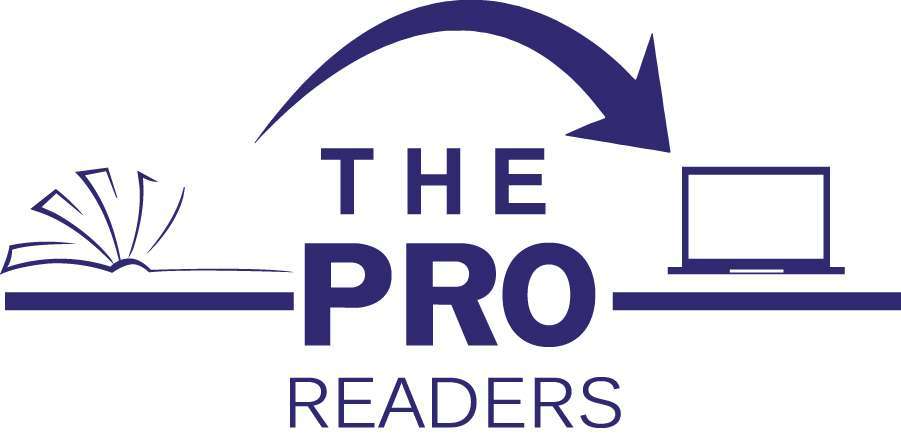Prudential Regulations Banks – Part I

Introduction:
Prudential Regulations play a crucial role in ensuring the stability and soundness of commercial banks operating in Pakistan. These regulations, issued by the State Bank of Pakistan (SBP), provide a comprehensive framework for risk management, capital adequacy, exposure limits, and other important aspects of banking operations. By implementing these regulations, the SBP aims to safeguard the interests of depositors, maintain financial stability, and promote a healthy banking sector in the country. This article explores the key highlights of the Prudential Regulations for commercial banks as set forth by the State Bank of Pakistan.
Regulation – R-1 Exposure Limits
Single Obligor/Group Limit:
Banks/DFIs must follow exposure limits for a single borrower or group of borrowers. These limits are based on a percentage of the bank’s/DFI’s equity, as shown in their most recent audited financial statements.
Starting from June 30, 2015, the limit for a single borrower is 20%, while the limit for a group of borrowers remains at 25%.
Related Party Exposure Limit:
Banks and DFIs must follow exposure limits for related parties or a group of related parties effective from June 30, 2015.
The maximum exposure limit for a single related party is 7.5% of the bank’s/DFI’s equity, while for a related group, it is 15%.
However, there are some exclusions from this limit, such as
- Loans are given to employees under the bank’s/DFI’s approved Human Resource policies.
- Placement of FE-25 funds in its own branches or in overseas subsidiaries of funds of FE-25 deposits by the bank.
- Investment of Banks or DFI’s in common shareholding of its subsidiaries.
Facilities extended to related parties should be on normal terms and conditions (at an arms’ length basis) applicable to other borrowers and must meet market rates.
Banks are also obligated to comply with the regulations outlined in Section 24 of the Banking Companies Ordinance, 1962.
Restrictions are placed on banking companies regarding loans and advances.
Firstly, a banking company cannot use its own shares as security for loans or advances.
Secondly, the company cannot provide unsecured loans or advances to or on the guarantee of its directors, their family members, any firm or private company where the company or its directors have an interest, or any public limited company in which the company or its directors have a substantial interest.
Additionally, no loans or advances can be provided by the banking company to any of its directors, or to individuals, firms, or companies in which the company or its directors have an interest as a partner, director, or guarantor, without the approval of the majority of the directors of that banking company, excluding the concerned director.
For Para 1 and 2 above Annexure – I is applicable:
Limit on exposure to a single obligor – Annexure – I
These guidelines provide methods for calculating exposure limits for a single borrower under Regulation R-1. The deductions made to determine exposure include:
- 100% deduction of deposits placed with the lending bank/DFI in the same currency as the loan and under perfected lien.
- 90% deduction of deposits placed with the lending bank/DFI in a different currency from that of the loan, deposits with another bank/DFI under perfected lien, encashment value of certain securities lodged by the borrower as collateral, and the Pak. Rupee equivalent of the face value of Special US Dollar Bonds converted at the inter-bank rate.
- Banks and development finance institutions (DFIs) that have at least an ‘A’ rating or its equivalent from a recognized rating agency can deduct 85% of the value of unconditional financial guarantees that they have accepted as collateral and are payable on demand. This provision allows for more favorable treatment of these guarantees in terms of risk-weighted assets.
- Listed Term Finance Certificates (TFCs) held as collateral and rated at least ‘A’ or equivalent by a credit rating agency on the State Bank of Pakistan’s approved panel will be subject to a 50% deduction. The TFCs must also have a marked lien indicating that they are being used as security.
- 10% weights are given to pre-shipment/post-shipment and other instruments such as documentary credits, guarantees/bonds, and underwriting commitments.
- 50% weightage will be assigned to the following: i) Documentary credits (excluding Standby Letter of Credits, which will be counted as 100% exposure) issued by banks/DFIs; ii) Guarantees/bonds that are not financial guarantees; iii) Underwriting commitments.
- The weights for exposure taken against commercial banks/DFIs for placements will differ based on their credit rating:
Banks/DFIs rated ‘AAA’ will have a weightage of 25%. ii) Banks/DFIs rated ‘A’ and ‘AA’ will have a weightage of 50%. iii) Banks/DFIs rated below ‘A’ will have a weightage of 100%.
The bank/DFI should ensure that their Board of Directors approves the overall limit for each financial institution for interbank placements.
Exposure shall not include the following for the purposes of Regulation R-1:
- Loans and advances given to the Federal Government or any of its agencies under the commodity operations program of the Federal Government or guaranteed by the Federal Government.
- Banks and DFIs can consider cash margins held by them while calculating the extent of their obligations under letters of credit and letters of guarantee. This means that the cash margin will be deducted from the total obligation amount.
- Letters of credit that do not create any obligation on the part of the bank/DFI to make payments on account of imports (no liability L/C).
- Letters of credit opened on behalf of the Federal Government where payment is guaranteed by the State Bank of Pakistan/Federal Government.
- Collateralized facilities extended to commercial banks/DFIs through REPO transactions using SLR-eligible securities as underlying assets.
- Letters of credit issued for the import of plant and machinery, provided that the financial close has been completed for such LCs.
- Bills purchased or discounted from the borrower, which is drawn against the LCs of banks/DFIs meeting the following criteria:
i) Short-term bills (not more than 1 year) up to US$ 250,000 without any restriction.
ii) Short-term bills (not more than 1 year) of more than US$ 250,000 with at least a “BBB” rating assigned by Recognized Rating Agencies.
iii) Long-term bills (more than 1 year) with at least an “A” rating assigned by Recognized Rating Agencies.
Net Open Position:
According to Regulation R-1, when calculating exposure for derivative transactions, net open exposure should be used as permitted by the Financial Derivatives Business Regulations outlined in BSD Circular No. 17 dated November 26, 2004.
Additionally, reserves for the purpose of Regulation R-1 will include revaluation reserves for fixed assets of the bank/DFI up to 50% of their value.
In order to qualify for this reserve, it is necessary that the assets are evaluated by authorized valuators on the Pakistan Bank Association (PBA) panel, in a prudent manner that considers potential price fluctuations and forced sale value. Up to 50% of the reserve may be derived from revaluation reserves, which reflect the difference between the book value and the market value of the assets.
Large Exposure Limit:
A bank/DFI can’t have more than 50% of its total gross advances and investments (excluding investment in government securities and loans secured against GOP guarantees) as large exposures at any given time.
This limit does not apply to investments in government securities and loans secured against GOP guarantees.
SBP Supervisory Assessment
SBP may assign different concentration limits to different banks/DFIs based on its supervisory assessment.
Definitions
Equity
The term “equity” for a Bank/DFI as indicated in the latest audited financial statements consists of the
- paid-up capital of ordinary shares,
- general reserves,
- share premium account balance,
- reserve for issuing bonus shares,
- statutory reserves,
- and retained earnings/accumulated losses
- If it’s a branch of a foreign bank in Pakistan, equity will refer to the capital maintained without losses and provisions under Section 13 of the Banking Companies Ordinance, 1962.
Moreover, for the purpose of Regulation R-1, reserves will also include revaluation reserves related to fixed assets up to 50% of their value representing the difference between the book and market values.
However, to ensure accuracy, valuators on the panel of the Pakistan Banks Association (PBA) must prudently evaluate assets while considering potential price fluctuations and forced sale value for this purpose
Exposure
Exposure refers to various types of financing facilities provided by a bank/DFI.
This includes fund-based or non-fund-based financing facilities such as
- bills purchased/discounted;
- credit facilities through corporate cards;
- financing obligations under letters of credit;
- loan repayment financial guarantees;
- and other types of guarantees;
- subscriptions or investments in shares;
- certificates, or commercial papers issued or guaranteed by the person;
- net open positions on derivative transactions allowed under Financial Derivatives Business Regulations
Related Party in the context of a bank/DFI is:
- Sponsor shareholders, CEO, employees, directors, or any of their family members.
- Any entity, such as a proprietorship, firm, company, or trust, in which the bank/DFI or any of the individuals previously mentioned above hold a position as a director, proprietor, partner, or shareholder with ownership of 5% or more of the paid-up capital in said entity.
- Any other entity that heavily relies on the bank/DFI for its business acquisition or provision of services, where more than half of its business is with the bank/DFI either upstream or downstream.
- Nominee Directors appointed by the Federal/Provincial government by virtue of their shareholding are excluded from this definition. However, it will include their personal or family business interests.
Group
‘Group’ refers to individuals or entities that hold substantial ownership interest (as defined in these regulations) and control over each other, including their dependent family members and subsidiaries.
Subsidiary
Subsidiary means a company or a body corporate that is controlled by another company or body corporate which directly or indirectly owns or controls more than 50% of its voting securities or has the power to elect and appoint more than 50% of its directors.
Control
Control refers to ownership, directly or indirectly through subsidiaries, of more than half of the voting power of an enterprise.
Substantial ownership/affiliation:
It means beneficial ownership of more than 25% of shares by a person or their dependent family members, including spouse, dependent lineal ascendants and descendants, and dependent brothers and sisters.
However, ownership by government-owned entities and financial institutions will not be considered substantial ownership/affiliation for the purpose of these regulations.
SBP Prudential Regulations Link
Please Also Read:
Prudential Regulations Banks – Part II
My Affiliates Links:
Canva
Shopify
Hexact





mansoor
May 18, 2024 at 15:15Under the laws and regulations of Pakistan, particularly those enforced by the State Bank of Pakistan (SBP), the specifics of whether a personal guarantee from a bank will be retained if a company becomes listed and the bank’s ownership in the company falls below 50% can depend on several factors, including the terms of the original loan agreement and the bank’s internal policies.